Natural flood management: is geology more important than trees?
Looking at innovative ways of creating resilience to flooding hazards with natural flood management.
23/11/2023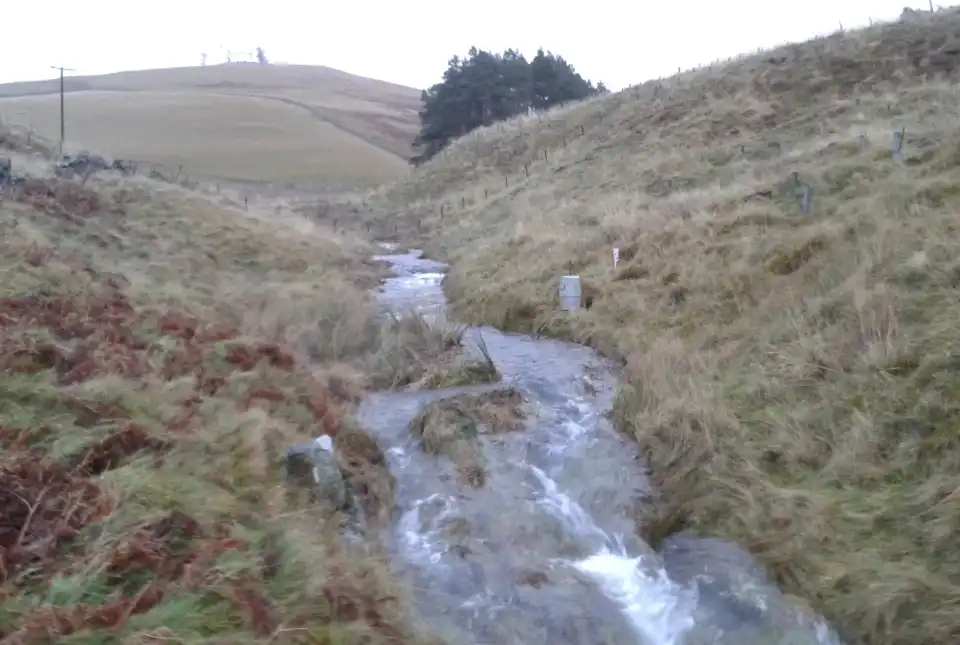
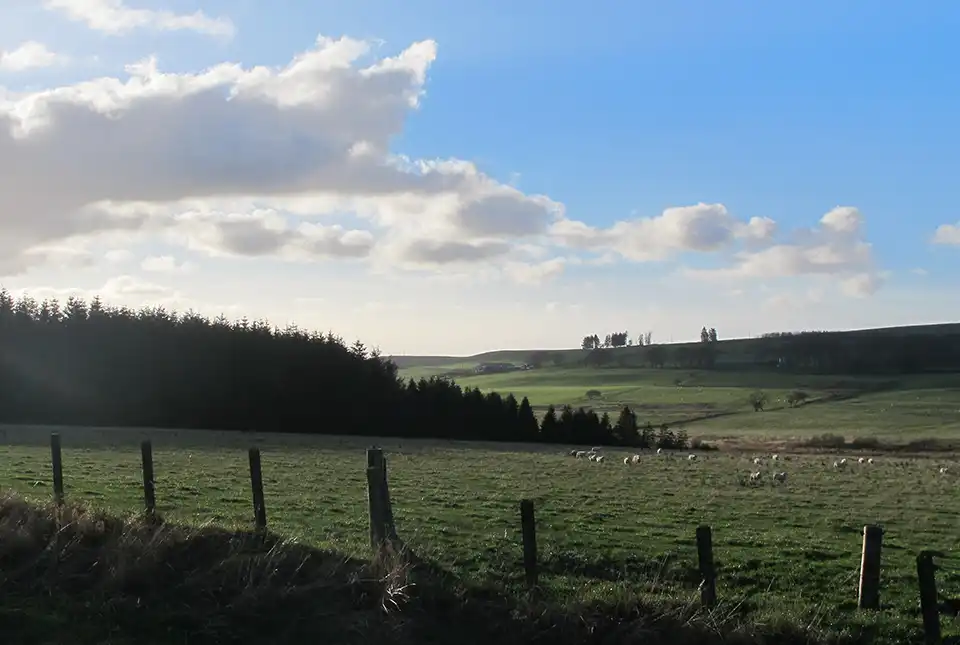
View of the Eddleston Natural Flood Management demonstration and research site in the Scottish Borders. This is one of a global network of UNESCO Ecohydrology Demonstration Sites. © Leo Peskett / Heriot Watt
Natural flood management (NFM) has become a key aspect of UK policy to reduce the risk of flooding, a hazard that is expected to increase under future climate-change scenarios.
What is natural flood management?
NFM seeks to control flooding by reducing or slowing the flow in river catchments using natural approaches. These include measures such as:
- planting trees to enhance infiltration and catchment roughness
- installing leaky wooden barriers within streams to create temporary surface water storage
- re-meandering rivers to reconnect them to their flood plains
Current understanding of natural flood management
There is growing pressure to change the way landscapes are managed at large spatial scales to respond to the climate and biodiversity crises. Despite its newfound popularity in UK policy, there are still uncertainties about the effectiveness of NFM at large spatial scales and for large floods. This is particularly true for measures that are dispersed across catchments, such as land-use change through afforestation or improvements to soil quality. Understanding how water is stored and released within catchments is vital for predicting the effects of these changes on both floods and droughts, as well as a host of other co-benefits such as biodiversity and agricultural productivity.
Recent work by Heriot-Watt University, the University of Edinburgh, BGS and the University of Dundee has started to look at these questions at the internationally important UNESCO ecohydrology demonstration site at the Eddleston Water natural flood management research site in the Scottish Borders.
Why is more research needed?
The infiltration of water into the subsurface is a key area of research in NFM including:
- how water infiltrates different soils
- the effect of different soil properties on infiltration rates
- the effect of different land uses on infiltration rates
In addition to understanding how easily water infiltrates, we also need to know how much water can infiltrate and where it goes — in other words, how much water can be stored? There has been much less research on quantifying catchment storage and the role of deeper catchment storage in the context of NFM, despite its potentially fundamental importance to our understanding of hydrology.
The effects of soils and geology on catchment storage
Using multiple methods, including water-level monitoring and stable isotopic tracers, our research estimated water storage across nine subcatchments and correlated the findings with catchment properties such as soil type, land cover and geology. We found that soils and geology dominated plantation forest cover in controlling catchment water storage, suggesting that the effects of changing forest cover are masked by more dominant soil and geological properties.
There are, of course, caveats to the work: we only looked at existing, mature conifer forests and only considered the effect of trees on storage. The impacts of trees on surface roughness and broadleaved trees, which are the main type planted by this and many other NFM projects, were not considered. While the differences are probably minimal, these questions need to be tested through further research. Our findings are, however, consistent with other work looking at land cover and catchment storage and catchment response to storms in Eddleston and elsewhere in Scotland.
Implications for natural flood management
These findings have two significant implications for NFM. The first is to add further criteria for determining the planting of the ‘right trees in the right place’. This storage perspective suggests that tree planting needs to be targeted at areas where potential storage is high but infiltration rates are low, such as highly compacted or degraded soils in relatively permeable catchments. The second is the need to understand dominant catchment controls on runoff in any NFM scheme, which means getting better knowledge of hydrological processes within catchments and their representation within models. We are exploring this second implication in a follow-up study combining stream flow data and water tracer data into a hydrological model, to see if this improves model outputs and therefore understanding of land use change in the catchment.
There is growing pressure to change the way landscapes are managed at large spatial scales to respond to the climate and biodiversity crises. Gaining a better understanding of catchment water storage across different environments is likely to be vital for predicting the multiple benefits and risks of nature-based solutions such as NFM. Future research using both empirical and modelling approaches needs to incorporate these perspectives to underpin effective future management strategies.
About the authors

Prof Alan MacDonald
Head of BGS Groundwater
Leo Peskett
Assistant professor in physical geography
Heriot-Watt University
Leo’s work focuses on evaluating the effectiveness of nature-based solutions in the land and water sectors and engaging with policymakers at international to local levels to bridge research and policy. His recent research has concentrated on:
- the integration of land and water management in the UK
- the impacts of land use on runoff in a natural flood management context
- the use of the natural capital approach in environmental management
Prior to academia, Leo spent a decade heavily involved in the development of global policies to reduce carbon emissions from deforestation (REDD+) and related climate change policies, working with the Overseas Development Institute, UN agencies and governments in the global North and South.
Relative topics
Related news

Funding awarded to UK/Canadian critical mineral research projects
08/07/2025
BGS is part of a groundbreaking science partnership aiming to improve critical minerals mining and supply chains.

AI and Earth observation: BGS visits the European Space Agency
02/07/2025
The newest artificial intelligence for earth science: how ESA and NASA are using AI to understand our planet.
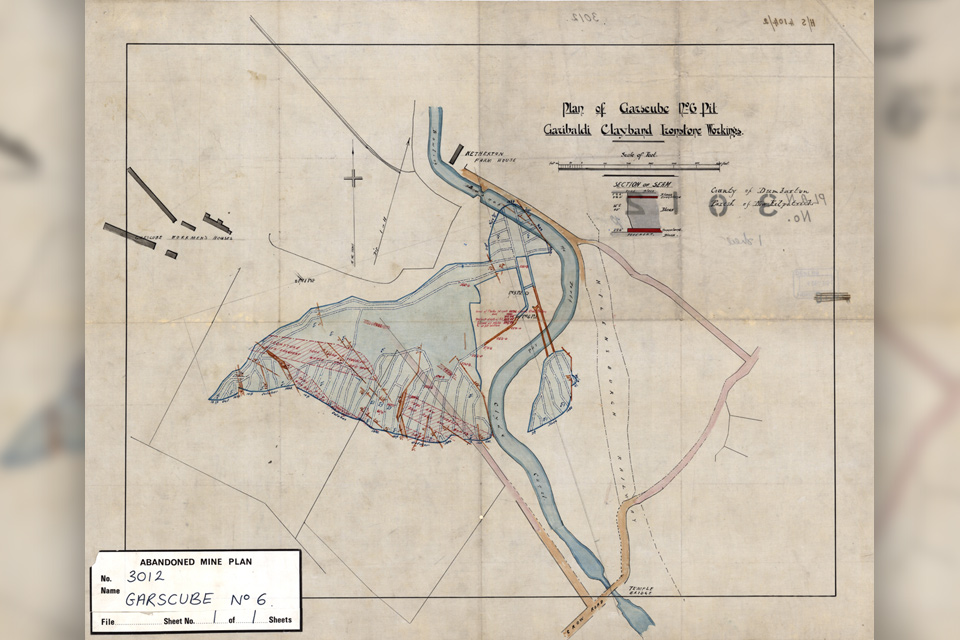
Release of over 500 Scottish abandoned-mine plans
24/06/2025
The historical plans cover non-coal mines that were abandoned pre-1980 and are available through BGS’s plans viewer.
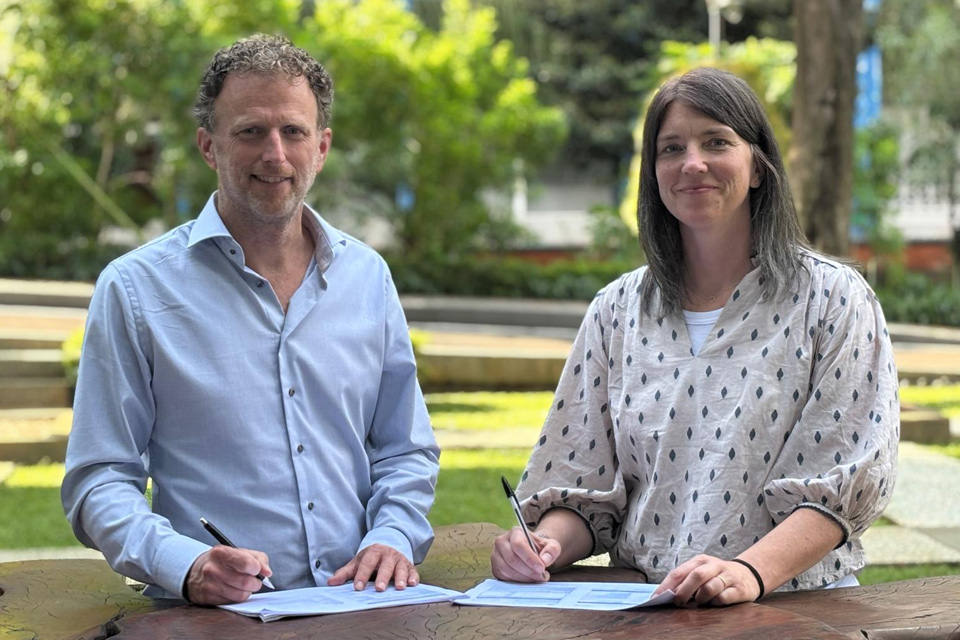
New collaboration aims to improve availability of real-time hazard impact data
19/06/2025
BGS has signed a memorandum of understanding with FloodTags to collaborate on the use of large language models to improve real-time monitoring of geological hazards and their impacts.

Modern pesticides found in UK rivers could pose risk to aquatic life
17/06/2025
New research shows that modern pesticides used in agriculture and veterinary medicines have been found for the first time in English rivers.

Goldilocks zones: ‘geological super regions’ set to drive annual £40 billion investment in jobs and economic growth
10/06/2025
Eight UK regions identified as ‘just right’ in terms of geological conditions to drive the country’s net zero energy ambitions.
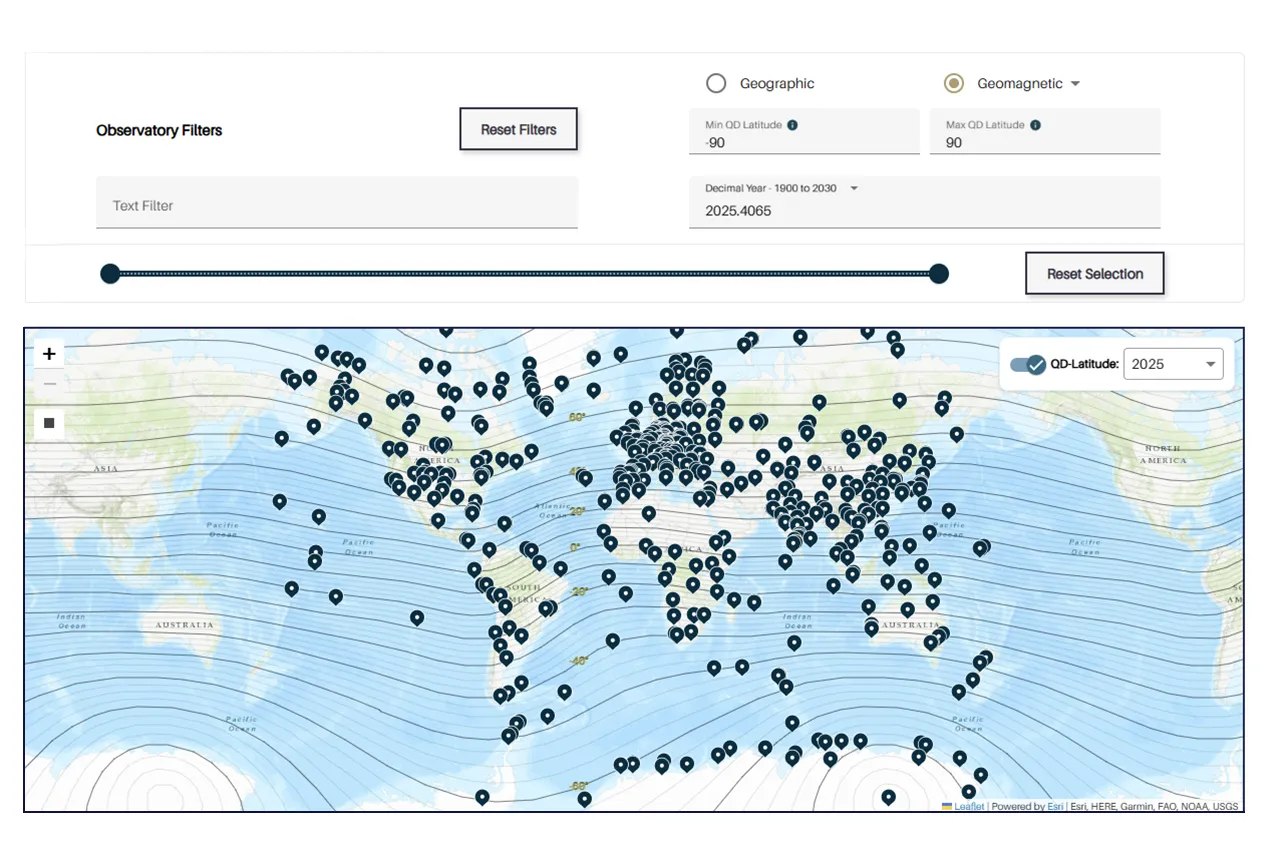
Upgraded web portal improves access to geomagnetism data
02/06/2025
BGS’s geomagnetism portal, which holds data for over 570 observatories across the world, has received a significant update.
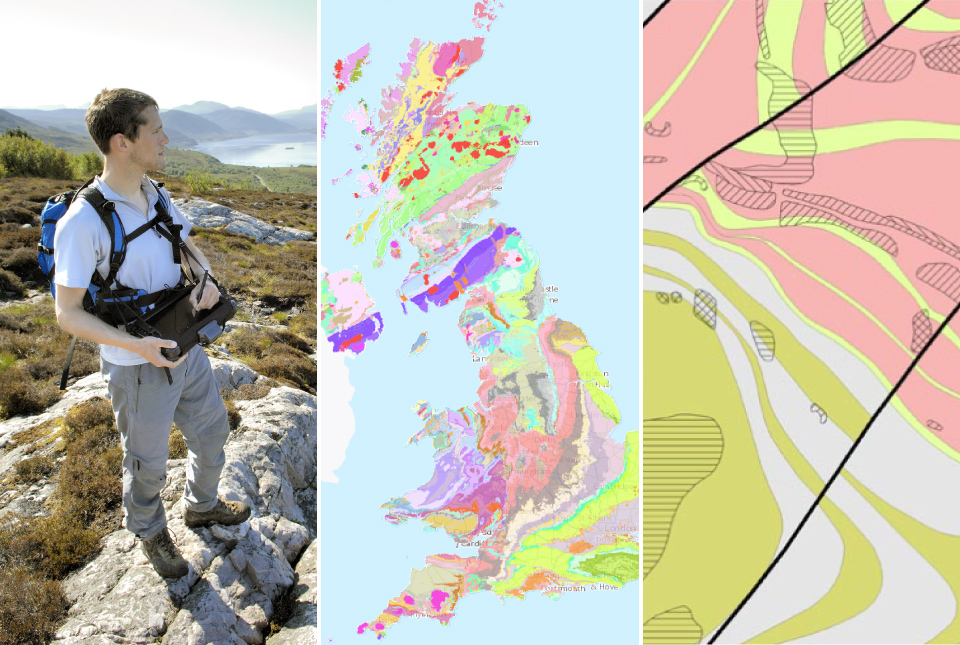
BGS digital geology maps: we want your feedback
29/05/2025
BGS is asking for user feedback on its digital geological map datasets to improve data content and delivery.

What is the impact of drought on temperate soils?
22/05/2025
A new BGS review pulls together key information on the impact of drought on temperate soils and the further research needed to fully understand it.

UK Minerals Yearbook 2024 released
21/05/2025
The annual publication provides essential information about the production, consumption and trade of UK minerals up to 2024.
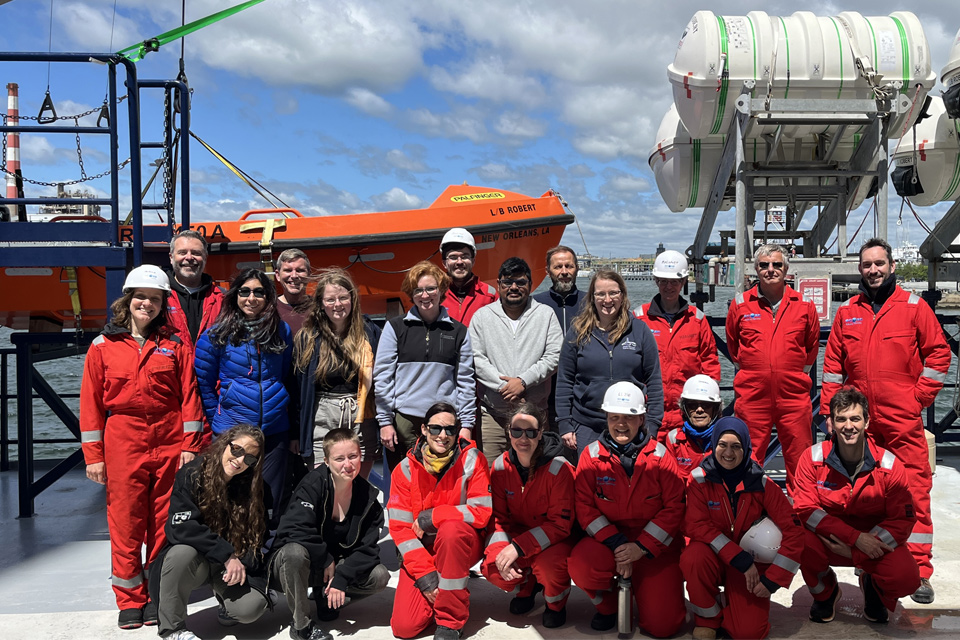
BGS scientists join international expedition off the coast of New England
20/05/2025
Latest IODP research project investigates freshened water under the ocean floor.

New interactive map viewer reveals growing capacity and rare earth element content of UK wind farms
16/05/2025
BGS’s new tool highlights the development of wind energy installations over time, along with their magnet and rare earth content.


